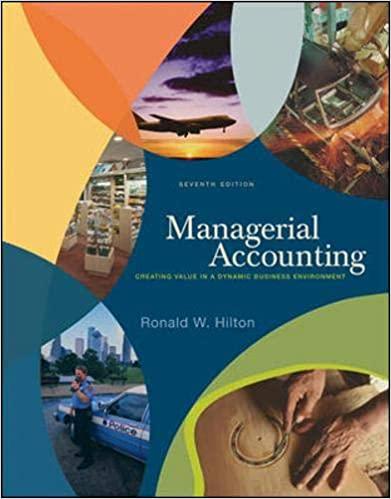Question
The financial statements for Armstrong and Blair companies are summarized here: Armstrong Company Blair Company Balance Sheet Cash $ 35,000 $ 22,000 Accounts Receivable, Net
| The financial statements for Armstrong and Blair companies are summarized here: |
|
| Armstrong Company | Blair Company | ||||
| Balance Sheet |
|
|
|
|
|
|
| Cash | $ | 35,000 |
| $ | 22,000 |
|
| Accounts Receivable, Net |
| 40,000 |
|
| 30,000 |
|
| Inventory |
| 100,000 |
|
| 40,000 |
|
| Equipment, Net |
| 180,000 |
|
| 300,000 |
|
| Other Assets |
| 45,000 |
|
| 408,000 |
|
|
| ||||||
| Total Assets | $ | 400,000 |
| $ | 800,000 |
|
|
| ||||||
| Current Liabilities | $ | 100,000 |
| $ | 50,000 |
|
| Note Payable (long-term) |
| 60,000 |
|
| 370,000 |
|
|
| ||||||
| Total Liabilities |
| 160,000 |
|
| 420,000 |
|
| Common Stock (par $10) |
| 150,000 |
|
| 200,000 |
|
| Additional Paid-in Capital |
| 30,000 |
|
| 110,000 |
|
| Retained Earnings |
| 60,000 |
|
| 70,000 |
|
|
| ||||||
| Total Liabilities and Stockholders Equity | $ | 400,000 |
| $ | 800,000 |
|
|
| ||||||
| Income Statement |
|
|
|
|
|
|
| Sales Revenue | $ | 450,000 |
| $ | 810,000 |
|
| Cost of Goods Sold |
| 245,000 |
|
| 405,000 |
|
| Other Expenses |
| 160,000 |
|
| 315,000 |
|
|
| ||||||
| Net Income | $ | 45,000 |
| $ | 90,000 |
|
|
| ||||||
| Other Data |
|
|
|
|
|
|
| Estimated value of each share at end of year | $ | 18 |
| $ | 27 |
|
| Selected Data from Previous Year |
|
|
|
|
|
|
| Accounts Receivable, Net | $ | 20,000 |
| $ | 38,000 |
|
| Inventory |
| 92,000 |
|
| 45,000 |
|
| Equipment, Net |
| 180,000 |
|
| 300,000 |
|
| Note Payable (long-term) |
| 60,000 |
|
| 70,000 |
|
| Total Stockholders Equity |
| 231,000 |
|
| 440,000 |
|
| The companies are in the same line of business and are direct competitors in a large metropolitan area. Both have been in business approximately 10 years and each has had steady growth. Despite these similarities, the management of each has a different viewpoint in many respects. Blair is more conservative, and as its president said, We avoid what we consider to be undue risk. Both companies use straight-line depreciation, but Blair estimates slightly shorter useful lives than Armstrong. No shares were issued in the current year and neither company is publicly held. Blair Company has an annual audit by a CPA, but Armstrong Company does not. Assume the end-of-year total assets and net equipment balances approximate the years average and all sales are on account. |
| Required: |
| 1. | Calculate the following ratios. TIP: To calculate EPS, use the balance in Common Stock to determine the number of shares outstanding. Common Stock equals the par value per share times the number of shares. (Use 365 days in a year. Do not round intermediate calculations and round your final answers to 2 decimal places.) |
2. A venture capitalist is considering buying shares in one of the two companies. Based on the data given, prepare a comparative written evaluation of the ratio analyses (and any other available information) and conclude with your recommended choice.
TIP: Comment on how accounting differences affect your evaluations, if at all.
|
| |
|
| |||||||||||||||||||||||||||||||||||||||||||||||||||||||||||||||||||||||||||||||||||||||||||||||||
|
| |||||||||||||||||||||||||||||||||||||||||||||||||||||||||||||||||||||||||||||||||||||||||||||||||
|
| |||||||||||||||||||||||||||||||||||||||||||||||||||||||||||||||||||||||||||||||||||||||||||||||||
| |||||||||||||||||||||||||||||||||||||||||||||||||||||||||||||||||||||||||||||||||||||||||||||||||
Step by Step Solution
There are 3 Steps involved in it
Step: 1

Get Instant Access to Expert-Tailored Solutions
See step-by-step solutions with expert insights and AI powered tools for academic success
Step: 2

Step: 3

Ace Your Homework with AI
Get the answers you need in no time with our AI-driven, step-by-step assistance
Get Started


